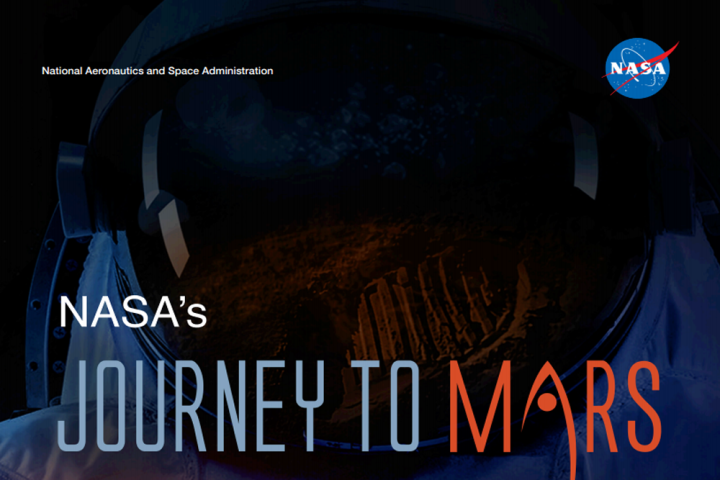
Phase one, or “Earth Reliant” as NASA calls it, kicks off the agency’s official blueprint for reaching Mars. During this phase —which, unsurprisingly, has already started— the agency intends to make use of the International Space Station to participate in a series of research projects. By testing life support systems, 3D printing modules, and the general effect of spending extended amounts of time in space, NASA hopes to compile the data necessary to begin preparing for an actual long-haul mission to Mars. American astronaut Scott Kelly and Russian cosmonaut Mikhail Kornienko are currently participating in phase one, analyzing the effects of spending one year in space.

The next step in NASA’s plan, called “Proving Ground,” aims to expand testing and research beyond low-Earth orbit. Tests throughout this phase include complex deep space operations which primarily concern operating in cislunar space — i.e. the area around the moon which provides stable staging orbits. Though this phase ramps up the supposed difficulty pertaining to living and working in space, NASA says the astronauts still have the ability to return to Earth in a matter of days during the operation. NASA is already hard at work on this phase, building the Space Launch System rocket, as well as the Orion spacecraft, which are currently on track to fly by the end of this decade.
“NASA’s strategy connects near-term activities and capability development to the journey to Mars and a future with a sustainable human presence in deep space,” associate administrator for Human Exploration and Operations William Gerstenmaier says. “This strategy charts a course toward horizon goals, while delivering near-term benefits, and defining a resilient architecture that can accommodate budgetary changes, political priorities, new scientific discoveries, technological breakthroughs, and evolving partnerships.”
NASA’s third and final stage is the aforementioned “Earth Independent” phase. By combining the research and development of the previous two phases, the agency hopes to send astronauts to the general vicinity of the red planet. It first plans on sending humans to either the low-orbit area of Mars or to one of Mars’ moons, before eventually descending onto the planet’s surface. While it doesn’t plan on reaching this phase until the 2030s, NASA already has its sights set on the revolutionary advances humans have the ability to make on Mars as opposed to relying on just robotic rovers.
In the report, NASA also makes it clear it doesn’t intend on embarking on this massive adventure alone. By stressing the importance of collaboration between the agency and its partners, it hopes to make the journey to Mars a “global achievement” which signifies a massive shift in the development of humanity. With the European Space Agency already on board and lending its hand with the Orion spacecraft, the door remains open for countries like China, Japan, and Russia to join in on this unprecedented mission.
Obviously a trip to Mars (no matter how long it takes) comes with its fair share of pitfalls and risks. NASA acknowledges it needs to develop a new and reliable way for astronauts to function and work in space, while also manufacturing an innovative and powerful way to actually get to Mars. Though the first two phases intend to solve all the risks inherent to deep space travel, the agency understands a mission of this magnitude requires an incredible amount of manpower and (of course) funding. Currently, NASA has roughly $4 billion to spend each year on the development of necessary technology with another $4 billion per year expected once the ISS retires.
If everything falls into place for NASA and it cruises on to its third phase void of catastrophic hiccups, the agency hopes to one day find answers to questions like: Does Mars harbor microbial life? Could the planet be a safe home for humans? And what can it teach us about the past, present, and future of Earth?
As ambitious as it may seem to send an actual team of astronauts to Mars, NASA’s 36-page report isn’t merely a marketing ploy or feeble attempt to inject popularity into the organization. Rather, its blueprint stands as a revolutionary piece of research which looks likely to pay massive dividends towards not only stepping a human foot on another planet, but for the future of deep space travel as a whole. So no pressure at all NASA — only the whole world is watching.
Editors' Recommendations
- NASA needs a new approach for its challenging Mars Sample Return mission
- NASA and Russian satellites just miss in ‘too close for comfort’ pass
- NASA’s damaged Ingenuity helicopter spotted in Mars rover photo
- NASA’s Mars copter flew high, fast, far, and long. Here are the key stats
- NASA video celebrates Mars helicopter following its final flight



